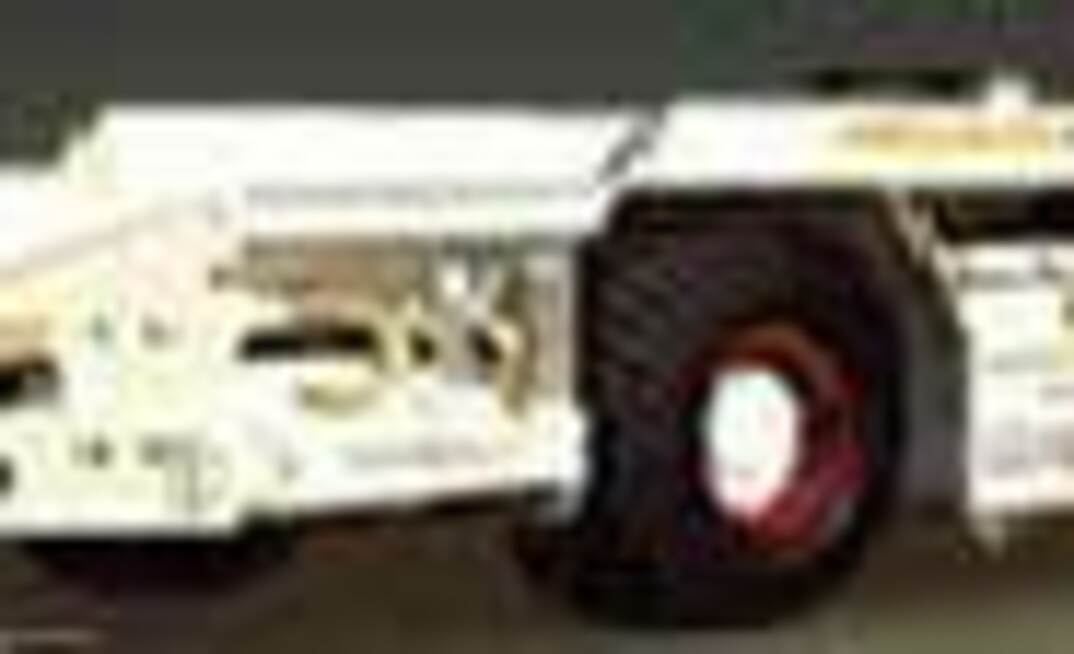A study undertaken by the Illinois Clean Coal Institute (ICCI) has shown that high-voltage continuous miners have the potential to increase production by 30%, provided coal can be hauled away from the face, and the roof bolting cycle is matched with the cutting cycle.
The study, Development and Demonstration of Advanced Mining Technologies to Reduce Production Costs. sought to develop technologies to reduce underground production costs by 20%. Improving face productivity by using high-voltage continuous miners formed only one part of the study that also looked at improving dust control in face areas.
Production modeling was carried out on high-voltage and standard-voltage continuous miners in a room-and-pillar mine layout. Compared with a standard-voltage miner the high-voltage miners had the potential to increase production by 30%.
The higher loading rates and tram speeds of the high-voltage machine were clearly evident, as was the lack of improvement in mine productivity. This deficiency turned the attention of the project team to haulage systems and a concerted effort was made to reevaluate the data from a haulage perspective.
“Fortunately, there are steps mine management can take to increase haulage capacity without purchasing all new equipment. These steps include installing tailgates and sideboards and training equipment operators on the importance of capacity utilization,” the report said.
If however a mine is selecting new equipment the report recommends that capacity should be the primary selection criteria followed by haulage flexibility.
“Flexibility means having multiple options for number of haulage units used, haulage routes and distances traveled, and change-out methods and locations. In general, flexibility is determined by whether a power-supply cable tethers the haulage vehicle.”
The most common haulage systems used in Illinois are cable shuttle car, diesel ram-car, battery ram-car, and continuous haulage (not currently in use). All have pros and cons. Battery powered shuttle cars were identified as a way of maximizing the capacity of the new high capacity miners.
As part of the research the Freedom Car, a battery shuttle car developed by Phillips Machine Service, was evaluated. The Freedom Car was introduced in 2000, MSHA approvals were obtained in 2001, and demonstrations at Appalachian coal mines were conducted in 2002.
Advanced haulage systems, such as the Freedom Car, were envisioned as having the advantages of both shuttle cars and ram-cars (high capacity combined with excellent flexibility). Research findings suggest that this type of haulage might provide potential solutions to the haulage problems that exist in today’s coal industry. Replacing existing haulage with battery shuttle cars may increase section production between 15% and 20% depending upon the mining layout. Additional benefits include elimination of cable maintenance, estimated to cost US$25,000 per annum.
“While there is still a delay associated with changing batteries on a Freedom Car, the timing of this delay can be scheduled by the operator. However, most cable delays are unplanned and occur in locations that halt production, such as when the car is either behind the miner or at the feeder. Battery maintenance is preventive in nature while cable maintenance is corrective,” the report said.
The team is also evaluating the concept of placing a surge car behind the miner to overcome delays while shuttle cars are changing behind the miner. Modeling of a surge car system showed it had the potential to increase productivity by over 30%. This is an alternative to increasing face productivity without continuous haulage.
Time studies data was also collected from a longwall development section, and, as the report points out, the financial impact on longwall operations would obviously be different, since the great majority of production comes from the longwall face.
“However, as most longwall operations are restricted by development rates, this system should provide similar benefits to longwall operations also. In some cases, due to their pillar and entry configurations, the impact on longwall development may even be greater than typical continuous miner operations,” the report said.
Meanwhile, in Australia, Joy Mining Machinery carried out a risk assessment for high-voltage continuous miners earlier this year. Industry response was very positive, according to technical director, Brad Neilson, but mines have been reluctant to go to higher voltage predominantly because of higher infrastructure costs associated with power distribution underground.
























